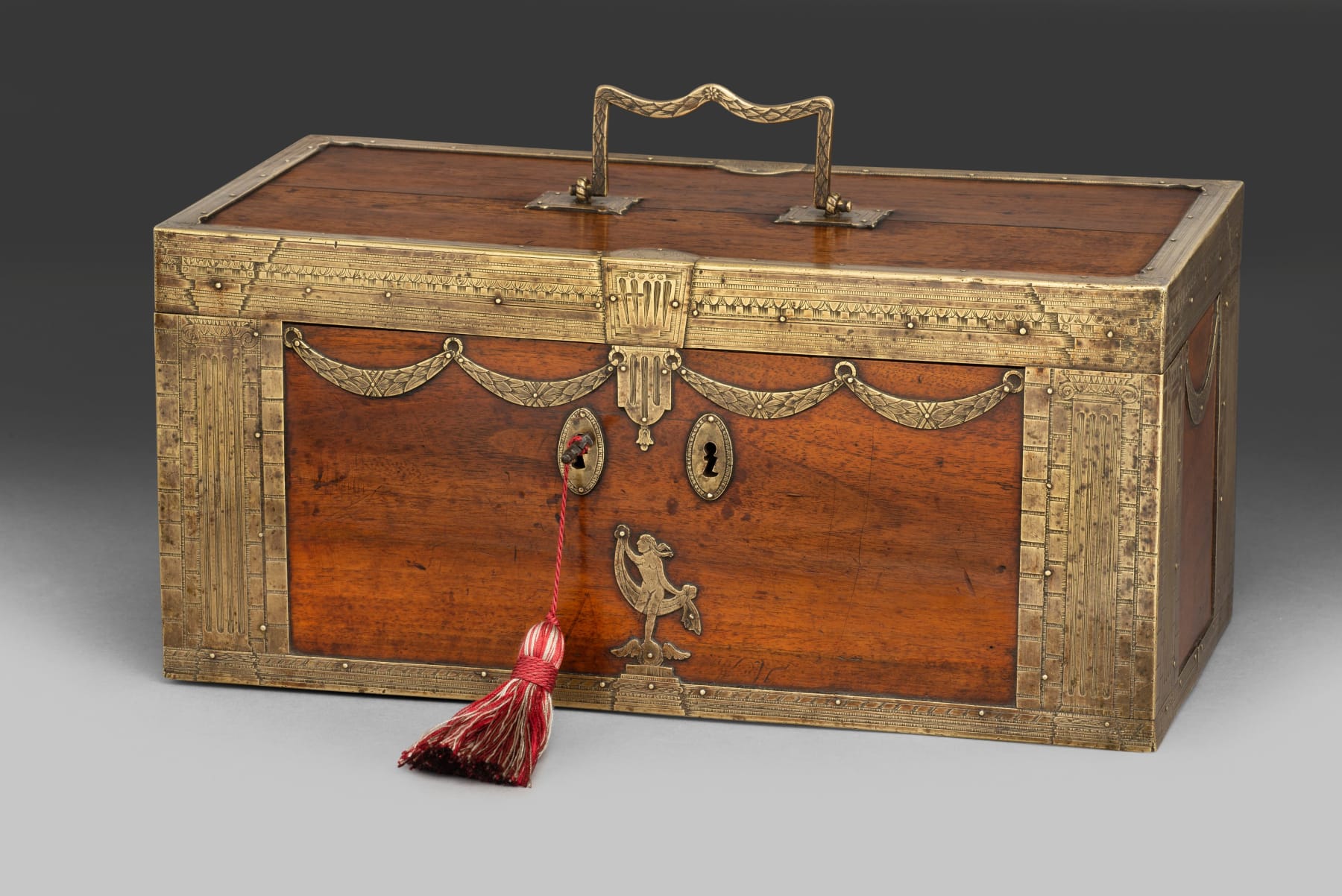18th Century Dutch Teak Twin-lock Strong Box with Engraved Brass Mounts
NETHERLANDS, CIRCA 1780
18.1 x 40 x 20 cm
7 ¼ x 15 ¾ x 8 in
7 ¼ x 15 ¾ x 8 in
7000
Further images
Of architectural form, the hinged top with an arched engraved brass carrying handle and engraved brass mounts to all sides, including two engraved ovals with laurel swags, one containing floral...
Of architectural form, the hinged top with an arched engraved brass carrying handle and engraved brass mounts to all sides, including two engraved ovals with laurel swags, one containing floral decoration and the other a profile of a lady; the corners engraved with ionic pilasters and stonework; swags to each side and the front centred by a figure of Fortune standing on a winged wheel and holding a torn sail. With two locks which require unlocking and locking in sequence. including original double-ended master key. The lid opening to reveal a hinged panel secured with a swivel catch, the interior of the box with two divisions.
The three interior sections of this box echo the form of tea chests where containers and a central mixing bowl would have been kept. However, the size of this example is twice that of most created for tea. The double lock and the emblem of Fortuna suggest it may have been used for valuable documents and other keepsakes.
Furniture with engraved brass decoration of this quality was made in the mid-18th century by a select few furniture makers including John Channon (1711-1783), Abraham Roentgen (1711-1793) and Johann Frederick Hintz (1711–1772). Very few boxes were illustrated, but Hintz and the firm of Landall & Gordon were known to have produced tea chests and caddies of this quality.
Figures of comparable form are depicted in inlaid brass on the Powderham Bookcases, one of few pieces certainly identified as being by John Channon as they carry engraved brass plaques with his name and the date. See Christopher Gilbert and Tessa Murdoch, 'John Channon and brass-inlaid furniture 1730-1760', Yale University Press, 1993, p. 111, pl. 135 and 136 and the Victoria and Albert Museum, accession number W.1A-1987.
The overall architectural and swagged design of the metalwork on this box is reminiscent of a French, mid-18th design in the collection at the Victoria & Albert Museum, 31 x 44cm, accession no. E.733-1938.
The three interior sections of this box echo the form of tea chests where containers and a central mixing bowl would have been kept. However, the size of this example is twice that of most created for tea. The double lock and the emblem of Fortuna suggest it may have been used for valuable documents and other keepsakes.
Furniture with engraved brass decoration of this quality was made in the mid-18th century by a select few furniture makers including John Channon (1711-1783), Abraham Roentgen (1711-1793) and Johann Frederick Hintz (1711–1772). Very few boxes were illustrated, but Hintz and the firm of Landall & Gordon were known to have produced tea chests and caddies of this quality.
Figures of comparable form are depicted in inlaid brass on the Powderham Bookcases, one of few pieces certainly identified as being by John Channon as they carry engraved brass plaques with his name and the date. See Christopher Gilbert and Tessa Murdoch, 'John Channon and brass-inlaid furniture 1730-1760', Yale University Press, 1993, p. 111, pl. 135 and 136 and the Victoria and Albert Museum, accession number W.1A-1987.
The overall architectural and swagged design of the metalwork on this box is reminiscent of a French, mid-18th design in the collection at the Victoria & Albert Museum, 31 x 44cm, accession no. E.733-1938.












